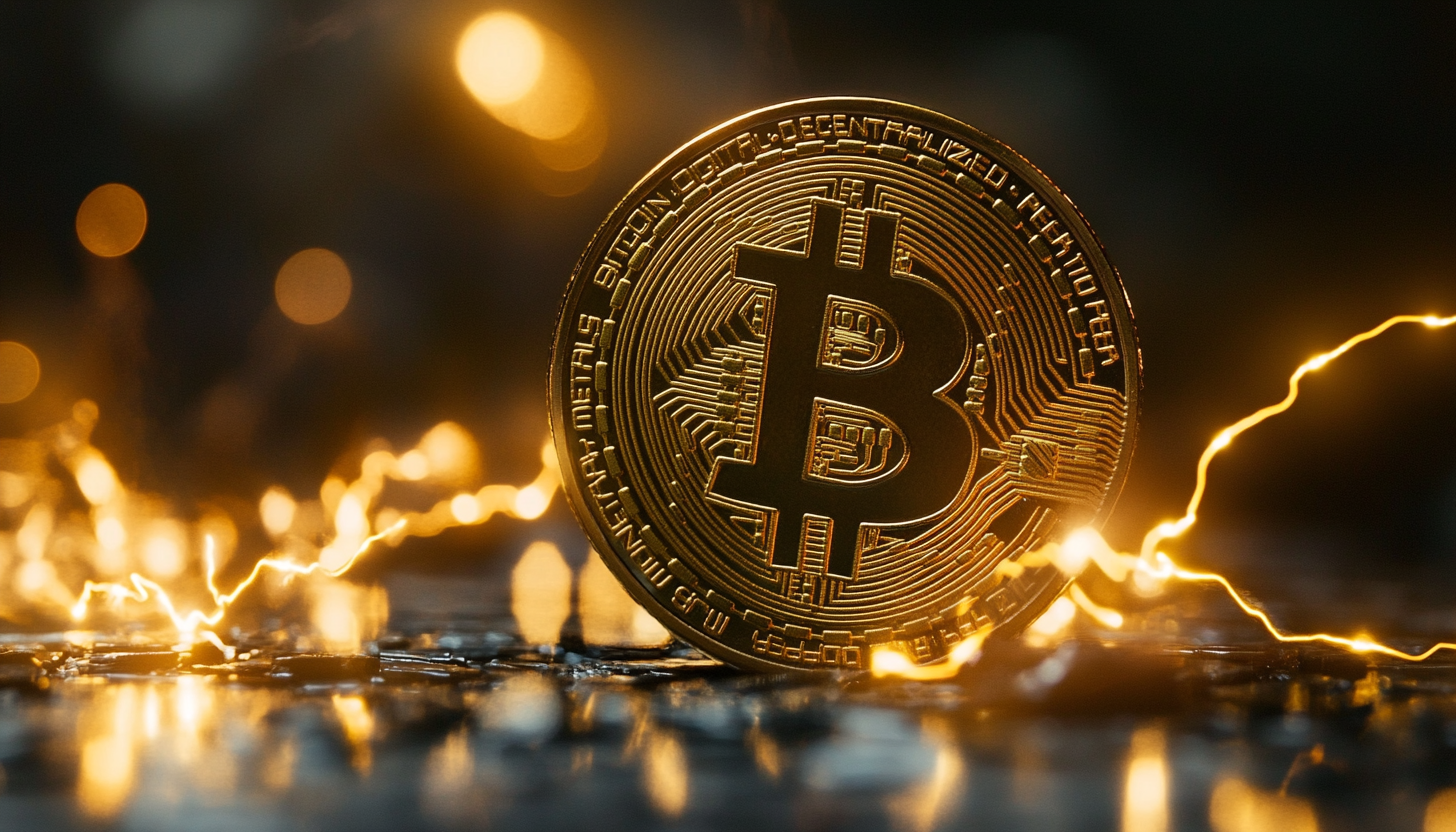
Cullen Hoback’s documentary Money Electric: The Bitcoin Mystery is an intriguing, if sometimes disjointed, exploration of Bitcoin’s origins, its global impact, and the elusive figure of Satoshi Nakamoto, the digital asset’s pseudonymous creator.
What begins as a hunt for the identity of Nakamoto ultimately becomes a deeper reflection on Bitcoin itself, its ongoing influence, and the financial turmoil that continues to swirl in its wake.
The film opens dramatically, juxtaposing "Bitcoin is dead" headlines with footage of the asset's price steadily rising, hinting at the resilience of the digital currency despite constant naysaying.
We are quickly introduced to Bitcoin's mysterious inventor, Satoshi, and a central theme emerges: if Satoshi were ever to reveal himself, the consequences could be profound.
Samson Mow, CEO of JAN3 and a key figure in the documentary, explains, "it’s too high-risk for Satoshi to come back. You get implicated as Satoshi and then every country in the world is going to want to go after you."
From there, the film ventures into the fundamentals of Bitcoin. Director Cullen Hoback adeptly covers Bitcoin basics, from its pseudonymous nature to the intricacies of personal responsibility for storing it.
The security Bitcoin promises, the film emphasizes, is unparalleled—until you make a mistake. Hoback’s hands-on experience with a Bitcoin miner, complete with a home setup, offers a relatable entry point for viewers unfamiliar with the complexities of mining.
However, the film quickly shifts from personal anecdotes to a grander stage: El Salvador’s bold experiment with Bitcoin as legal tender.
The narrative weaves through the politics of Bitcoin, introducing us to President Nayib Bukele, who has staked his country's economic future on Bitcoin, and back to Samson Mow, acting as a Bitcoin ambassador to global politicians and billionaires.
One of the more captivating moments features Mow alongside Mexico’s third-richest man, Ricardo Salinas, as they contemplate the use of a power plant to mine Bitcoin.
These interactions highlight the growing influence Bitcoin has among global elites while posing serious questions about the geopolitical implications of its adoption.
The documentary’s middle section dives deep into the 2008 financial crisis, the catalyst for Bitcoin’s creation. It revisits the genesis block—the first 50 Bitcoin ever mined—and the promise of an alternative financial system immune to the failures of traditional banking.
The visuals throughout are impressive, with sleek animations that help viewers grasp the often-abstract world of blockchain technology.
In its later acts, Money Electric morphs into an investigative journey to uncover Satoshi Nakamoto's identity. While names like Adam Back, Hal Finney, and Nick Szabo are floated, the film wisely refrains from indulging in sensationalism.
Instead, it portrays Nakamoto’s anonymity as central to Bitcoin’s ethos, even suggesting that revealing Satoshi could undermine the asset. A particularly interesting argument arises when Mow and Salinas discuss the fate of Nakamoto’s one million Bitcoin.
Would selling this trove destroy the market? While the film toys with the idea that Satoshi should burn his coins, it falls short by not explaining how that process would work—an unfortunate omission that could leave casual viewers puzzled or lead them to the wrong conclusions about how the Bitcoin network operates.
The film also explores the often cultish nature of Bitcoin maximalism, a movement of die-hard believers who see Bitcoin as the only true digital asset. Hoback, through his tone and selective highlighting of more animated characters and events within the Bitcoin space, appears skeptical of this fervor.
While the documentary provides a somewhat balanced view, featuring figures like YouTuber Michelle Phan and even a Serbian prince to emphasize the diverse and sometimes bizarre alliances Bitcoin has fostered, Hoback’s portrayal seems to subtly critique the more extreme elements of maximalism.
The film falters, however, when it delves into the infamous block size war between Samson Mow and Roger Ver, a dispute that, while important to insiders, may confuse the broader audience.
It might have been helpful to emphasize that the free market ultimately decided against larger block sizes, as reflected in Bitcoin’s price appreciation compared to B-Cash.
Adding context to the documentary’s background, Money Electric has stirred significant conversation on social media.
The film’s potential to unveil Satoshi Nakamoto’s identity, hinted at in the promotional material, drove much of the excitement leading up to its release.
Meanwhile, Mow and others have suggested that the real Nakamoto might not even be among the current list of suspects.
As the documentary delves deeper into the mystery, it insinuates that Peter Todd, a Bitcoin Core developer, could be Satoshi Nakamoto.
In comments made after the documentary's release, Mow speculated that while many dismiss Todd due to his eccentric personality, his involvement in the early days of Bitcoin could suggest he was Satoshi all along.
Mow humorously suggests that Satoshi might have been “an immature brat that wants attention,” and that Todd's behavior could align with that. Though not a definitive claim, the documentary leaves room for viewers to ponder whether Todd’s eccentricities might mask a deeper involvement in Bitcoin's creation.
Ultimately, while Hoback’s documentary is ostensibly about the search for Satoshi Nakamoto, that quest feels more like a subplot.
The main focus is on Bitcoin itself—its ability to thrive amid crises, its global adoption, and its role in an increasingly fragile financial system.
As the film covers everything from the Terra Luna crash to the collapse of Silicon Valley Bank, it becomes clear that Bitcoin’s mystery isn’t just about who created it, but how it has grown into a global financial phenomenon while traditional systems around it crumble.
To be fair, Bitcoin is a highly complex topic that requires moderate to expert knowledge across several fields. Explaining its abstract concepts in a way that is both engaging for mass audiences and seamlessly woven into the mystery of Satoshi’s identity in under two hours is an extremely ambitious goal.
Mow also mentioned that the original goal of the documentary was to create a mini-series, and one can certainly see that there is enough content and characters to sustain the Bitcoin story for an entire season.
One might speculate that marketing the film as a reveal of Satoshi’s identity was necessary to get picked up by a major network like HBO; however, it’s important to clarify that this remains mere speculation regarding the film’s focus.
Despite some disjointed subplots, Money Electric: The Bitcoin Mystery succeeds in presenting Bitcoin as a cultural force that transcends its origins. It captures the tension between Bitcoin’s idealism and the pragmatism of those who use it to navigate a world increasingly destabilized by traditional finance.
For those hoping to see the Nakamoto mystery solved, this film will disappoint. But for anyone interested in how Bitcoin continues to shape the world, this documentary is well worth the watch.
In the end, the film leaves us wondering: does it really matter who Satoshi is? Perhaps the real mystery lies not in Nakamoto’s identity but in Bitcoin’s ability to endure and evolve.
Money Electric doesn't offer a definitive answer, but it reminds us that the journey Bitcoin has taken, and the chaos it has survived, may be more important than the man—or people—who started it all.

